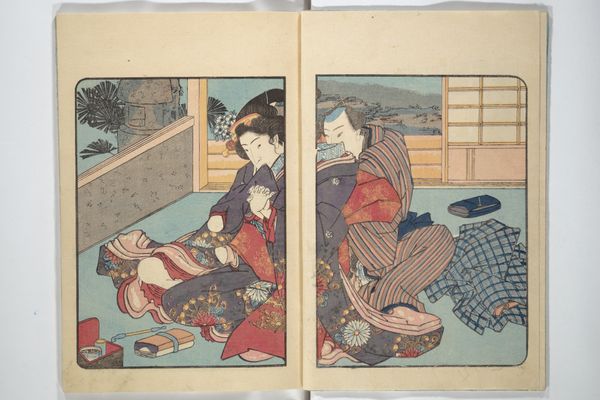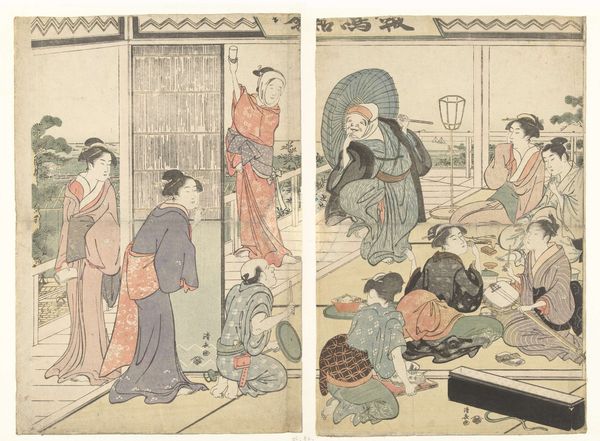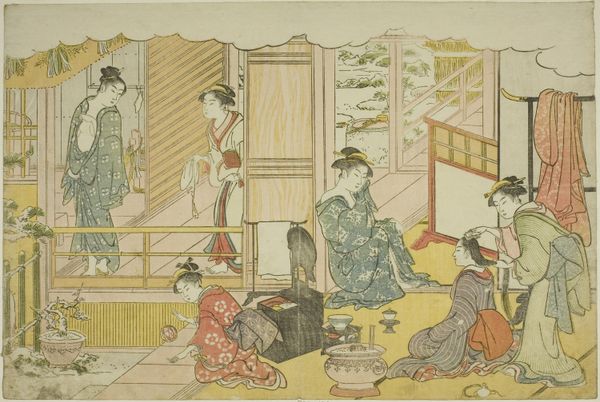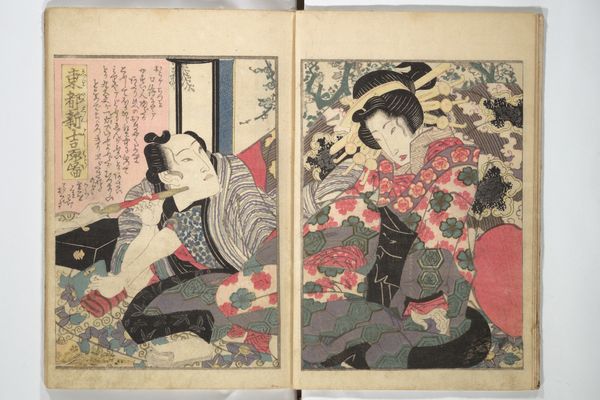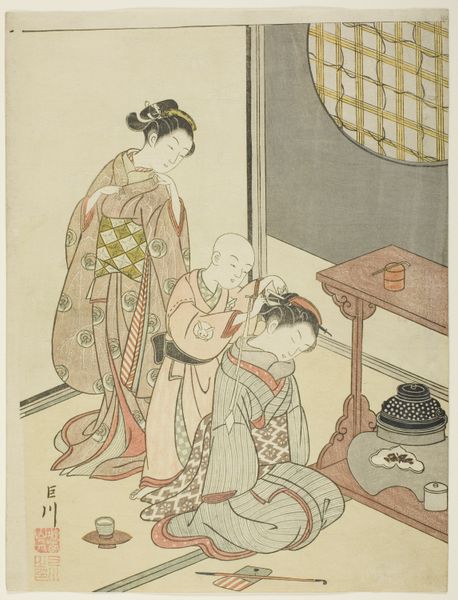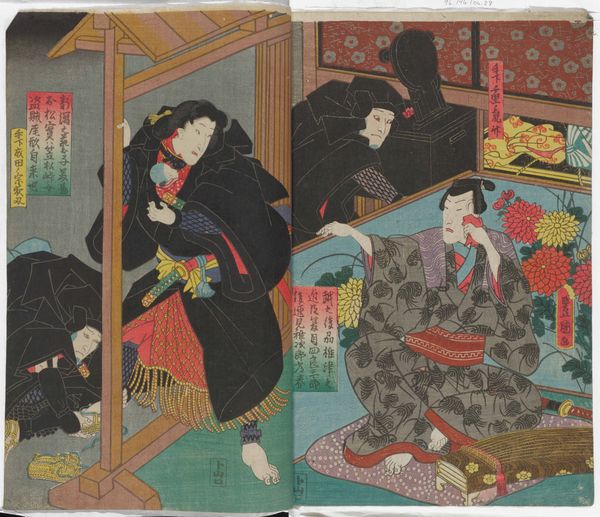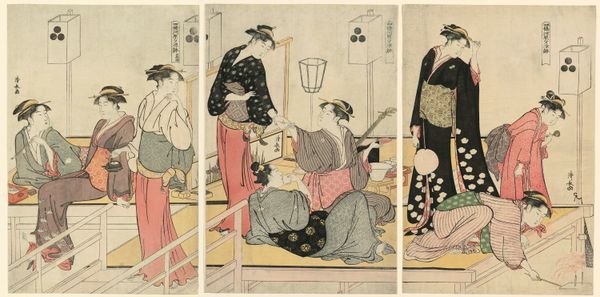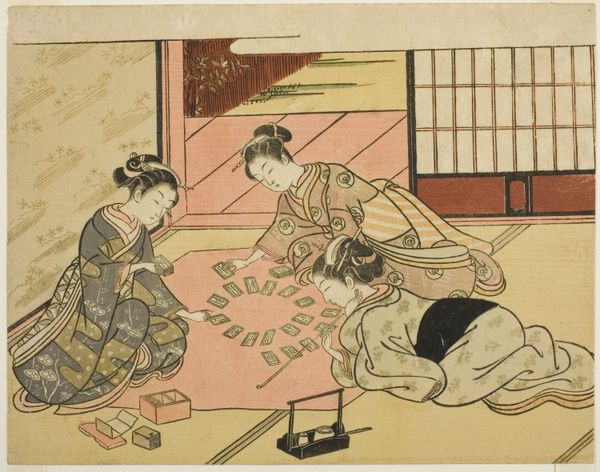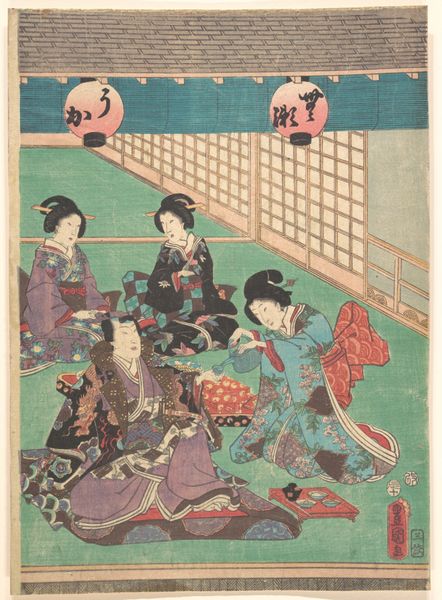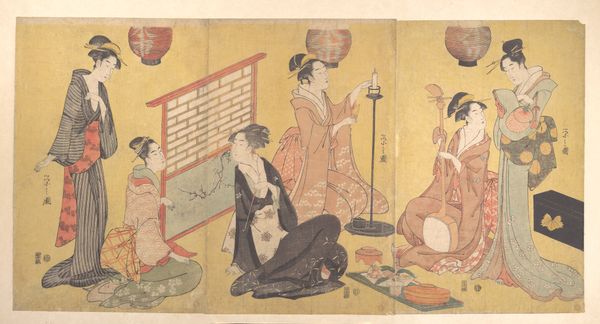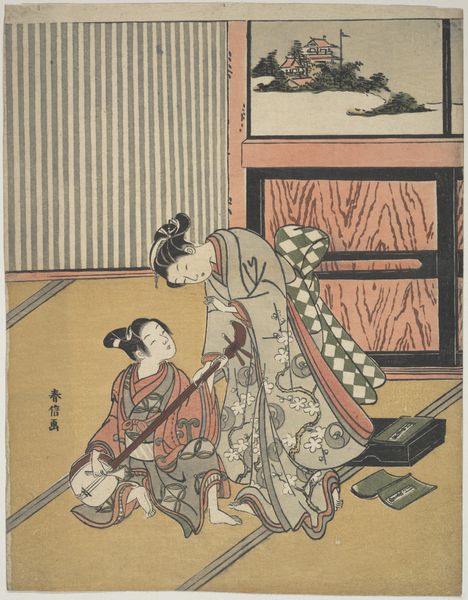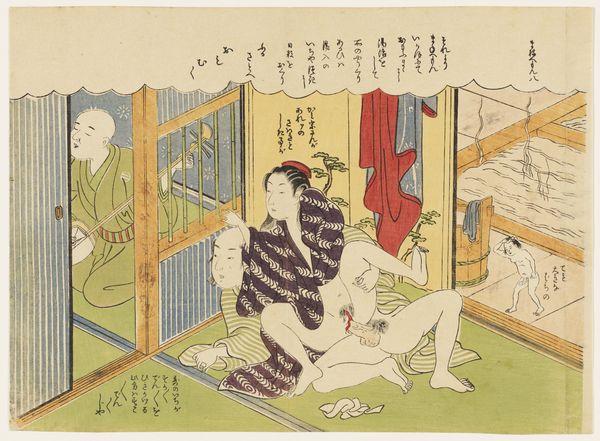
print, woodblock-print
#
water colours
#
muted colour palette
# print
#
asian-art
#
ukiyo-e
#
figuration
#
intimism
#
woodblock-print
#
men
#
genre-painting
Dimensions: each: 9 13/16 × 7 1/16 in. (25 × 18 cm)
Copyright: Public Domain
Editor: So this woodblock print, “Floating Bridge of Heaven,” by Yanagawa Shigenobu, from the 1830s… it feels really intimate, almost voyeuristic, like we're intruding on a private moment. What's your read on this, in terms of the broader cultural narratives it engages? Curator: That sense of intimacy is crucial. Ukiyo-e prints like this weren't just pretty pictures. They offered glimpses into the floating world, the lives of courtesans and their patrons. It is very carefully constructed, almost performative, with class and desire central to its symbolism. How do you see that operating here? Editor: I guess I see the arrangement of figures and objects as clues... like a stage set hinting at social roles and expectations. Curator: Precisely! This print provides us access to think about the negotiation of social norms and power dynamics through carefully chosen fabrics, colours and positioning. Consider the male figure, seemingly agitated – how might his role challenge or reinforce contemporary ideas about gender and status within this carefully staged environment? Are we complicit in this representation, as viewers? Editor: So, by observing, are we also perpetuating a certain gaze or expectation? I hadn’t considered it that way. Curator: Absolutely. Understanding the intended audience of these prints – often privileged men – forces us to confront the ethics of representation, particularly regarding gender and class. Reflecting on *why* it creates this sense of 'peeking in', is just as important as appreciating its beauty. Editor: This makes me think differently about ukiyo-e prints; they're more than just decorative objects. They're social documents, revealing the complexities and power dynamics of the Edo period. Curator: Exactly! By connecting the visual with the historical and social, we move beyond aesthetics and toward a more critical understanding of art’s role in shaping our perceptions of the world.
Comments
No comments
Be the first to comment and join the conversation on the ultimate creative platform.
